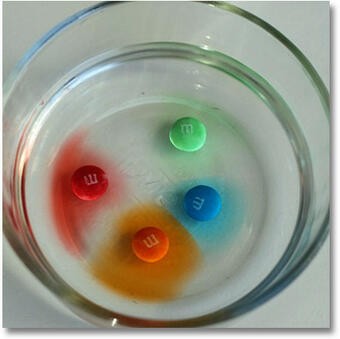Water’s remarkable ability to dissolve more substances than any other liquid has earned it the title of “universal solvent.” This unique characteristic plays a crucial role in sustaining life on Earth, facilitating vital chemical reactions, and shaping our planet’s environment. But why does water possess this extraordinary power? Let’s delve into the chemical properties that make water such an exceptional solvent.
The Polarity of Water: The Key to Its Dissolving Power
Water’s exceptional solvent properties stem from its unique molecular structure. A water molecule (H2O) consists of two hydrogen atoms and one oxygen atom. The arrangement of these atoms creates a polar molecule, meaning it has a slightly positive end (hydrogen side) and a slightly negative end (oxygen side).
This polarity allows water molecules to attract and interact with a wide range of other polar molecules and ions. When a substance comes into contact with water, the positive and negative charges of the water molecules attract the opposite charges of the substance’s molecules. This attraction can be strong enough to overcome the forces holding the substance together, causing it to dissolve.
The Dissolving Process: A Tug-of-War Between Molecules
Consider table salt (sodium chloride or NaCl) as an example. Salt is an ionic compound, meaning it consists of positively charged sodium ions (Na+) and negatively charged chloride ions (Cl-) held together by strong ionic bonds. When salt is added to water, the positive ends of the water molecules are attracted to the negative chloride ions, while the negative ends of the water molecules are attracted to the positive sodium ions.
This attraction creates a “tug-of-war” between the water molecules and the ionic bonds holding the salt together. The cumulative force of many water molecules pulling on the ions eventually overcomes the ionic bonds, separating the sodium and chloride ions. Once separated, these ions become surrounded by water molecules, forming a homogeneous solution. This process is called hydration.
Water as the Life Blood of Earth
Water’s ability to dissolve a vast array of substances makes it essential for life. It acts as a transport medium, carrying vital nutrients, minerals, and chemicals throughout the bodies of organisms and across ecosystems. In the human body, for example, water dissolves and transports nutrients, removes waste products through the kidneys, and regulates body temperature.
Furthermore, water’s solvent properties are crucial for various geological processes, shaping landscapes, weathering rocks, and transporting minerals in the Earth’s crust.
Conclusion: The Importance of the Universal Solvent
Water’s unique polar structure and resulting ability to dissolve a wide variety of substances make it the “universal solvent.” This remarkable property underpins countless biological, chemical, and geological processes, making water indispensable for life and shaping the world around us. Without water’s exceptional solvent capabilities, our planet and the life it supports would be drastically different.
